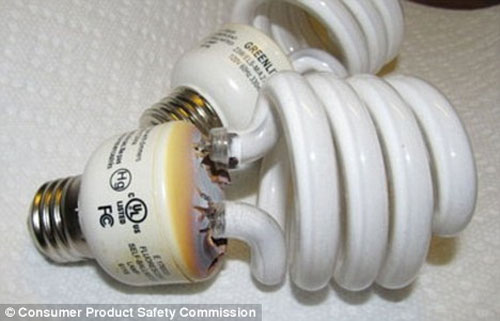
Fire hazard fears over compact fluorescent lamps at end of life
December 28, 2011
The lamps (CFLs) use electricity to heat an element in the lamp’s base that leads the mercury vapor gas in the coils to emit light. The bulb ends its life when the wire filament, which produces light when electricity passes through it, burns out and breaks. When a CFL can no longer produce light, the electronics in its base will still try to function, reportedly sometimes leading to overheating, smoke and fire.
The bulb ends its life when the wire filament, which produces light when electricity passes through it, burns out and breaks. CFLs have been touted as the bulb of the future because it uses about a fifth of the power than a regular bulb and is reported to have a life six to 10 times as great. However, there are other alternatives, such as the new, & very expensive LED lights. The Energy Independence and Security Act will gradually phase out traditional bulbs starting in 2012. The incandescent bulb hasn’t changed much since Thomas Edison patented it in 1879. Very few people may even be aware of the fact that the federal government passed a bill in 2007 that will eventually make the sale of incandescent light bulbs illegal. Fires from the old incandescent bulbs, on the other hand, are virtually nonexistent. The U.S. Consumer Product Safety Commission started an online complaints database in March. So far there have been 34 complaints about CFLs emitting smoke or a burning odor and four reports of the lights actually catching fire. The fire hazard concern is not new. In a past recall, Trisonic Compact Fluorescent Light Bulbs were recalled due to fire hazard by the Consumer Product Safety Commission in October of 2010. In 2009, standards were revised for materials used in the plastic housing of the base of CFLs sold in North America. However, millions are still in use that were produced before the change.
On the Web:
E-mail your news &
photos to editor@sitnews.us
|
||
